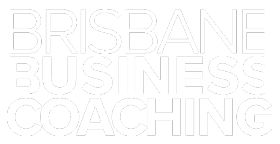Understanding cash flow is an integral part of running a successful business. It's the only way to know how profitable your business actually is and prevent financial problems that leave you in debt or out of business.
So what is cash flow exactly?
This term refers to the amount of money moving in or out of a business. It's key to understanding a business's liquidity.
Let's explore some tools to help with understanding cash flow.

Balance sheets should be completed monthly as well as at the end of every financial year. They give you an idea of the value of your business by tracking your assets and liabilities.
Some examples of assets include property, equipment, cash, stock, land, and money owed to the business by individuals or other businesses.
Some examples of liabilities include loans, credit card debt, and money owed to suppliers or tax collectors.
The value of your business, or your net worth, is equal to your assets minus your liabilities.

A profit and loss statement, also known as an income statement, summarises a fiscal quarter or year with a snapshot of all expenses and revenues.
It shows you when your income is no longer sufficient to pay all your expenses by tracking your income and expenses over a period of time.
If you find that you are not making a profit due to increasing business expenses, you might want to consider raising your prices. You should always ensure you are making a profit.

Cash flow statements allow you to track the money flowing in and out of your business over a certain period of time. They help you track seasonal trends and plan ahead for recurring payments.
These statements are also a great way to spot liquidity issues. You want your business to have enough funds to purchase assets and pay bills. Cash flow statements help you visualise how much cash you have on hand each month.
You can create a statement by making a list of all your transactions, both incoming and outgoing. Make note of your total incoming expenses and your total outgoing expenses.
Your cash flow statements should have the following columns.
Be sure to clearly state on your statements whether your numbers are actual or estimates and whether they include GST (Goods and Services Tax).
There are three major types of cash flow. These include cash flow from:
It's important to understand all three to get an accurate snapshot of your business's value and net cash flow. You should distinguish between the three types on your cash flow statements. Next we'll discuss what type of transactions fall under each category.
This refers to the everyday transactions that come with running a business.
In the operations section of your cash flow statement, record your net income from the goods and services you sell as well as accounts payable (money you owe) and accounts receivable (money owed to you).
Examples include wages, income receipts, stock movements, credit card payments, and funding to and from suppliers. If your accounts receivable is increasing faster than your income from sales, it's a sign that you're going to have problems managing your debts.
Cash flow from investment refers to any investment activities of your business.
In the investment section of your cash flow statement, record the purchase or sale of equipment, property, investment securities, and any other long-term assets.
Negative cash flow from investment activities is not necessarily a bad thing. Your business may be making investments that will pay off in the long run, such as investing in research and employee development.
Investment activity is an essential part of a business's growth.
Cash flow from financing refers to transactions with your creditors and owners.
In the financing section of your statement, record issues of shares or bonds, loan payments, money put into or borrowed from the business by the owners, and dividends paid out.
Investors may be particularly interested in a business's financing activities. It's a good insight into a company's capital structure management and overall financial health.
It's not enough to simply have positive cash flow from financing activities. A company could take on new debt and still show a positive cash flow for financing activities. This could mean a company is not generating enough revenue.

Cash flows may be simpler or more difficult to read depending on how large and how complex your business is. The most important figure in any statement is your net cash flow, which is the amount of cash you have left after paying all your monthly bills.

Net cash flow will be listed at the bottom of your statements. If this number continues to grow from month to month, your business is thriving and growing. If your net cash flow stays roughly the same from month to month, this might not be cause for concern, unless the number is low.
If you notice your cash reserves are consistently decreasing, you may have issues paying your debts, requiring you to rely on credit to pay bills. If your net cash flow is ever negative, it means you are spending more money than you are earning.
These statements help you visualise negative trends so you can act quickly to increase your cash reserves.

Your cash flow statement will highlight issues to help you preemptively fix financial problems. Some warning signs on a cash flow statement include:
This means you have more money going out than you're bringing in.
This means you aren't profitable. You are spending more than you're earning.
This means you're engaging in more business than you have the resources available for.
This occurs when outstanding receivables or unpaid invoices begin to pile up.
This won't appear on your cash flow statement but frequent turnover of staff can spell trouble for your business. If you are continually replacing employees, you may be wasting money investing in and training employees who ultimately aren't an asset for your business.
Once you understand cash flow statements, you can forecast incoming and outgoing cash for the coming months.
This helps you prepare in advance for shortfalls and surpluses and act accordingly. When surplus money is forecasted, you may want to put money into short-term investments. When income shortfalls are forecasted, you may want to apply for a loan in advance.

If your cash flow statements show a deficit in profit, what can you do to boost profits other than raise prices?
You can increase the number of customers you service. This can be done through customer outreach and marketing. You want as many people as possible to know about your business and the services you offer.
You should have a marketing plan that includes marketing research.
You can also increase the volume of products and services your existing customers purchase from you. This can be done through improving your products and adding new products and services.
Finally, you can review your variable expenses. These are expenses such as advertising and shipping charges. You may need to scale back some of your variable expenses to improve your bottom line.
Using balance sheets, profit and loss statements, and cash flow statements will help you identify small issues before they turn into giant liquidity problems.
These financial tools are key to understanding this process and will aid in your understanding of the value of your business and trends regarding profitability.
With a little financial tracking, you'll be able to increase profits and stay open for business.
